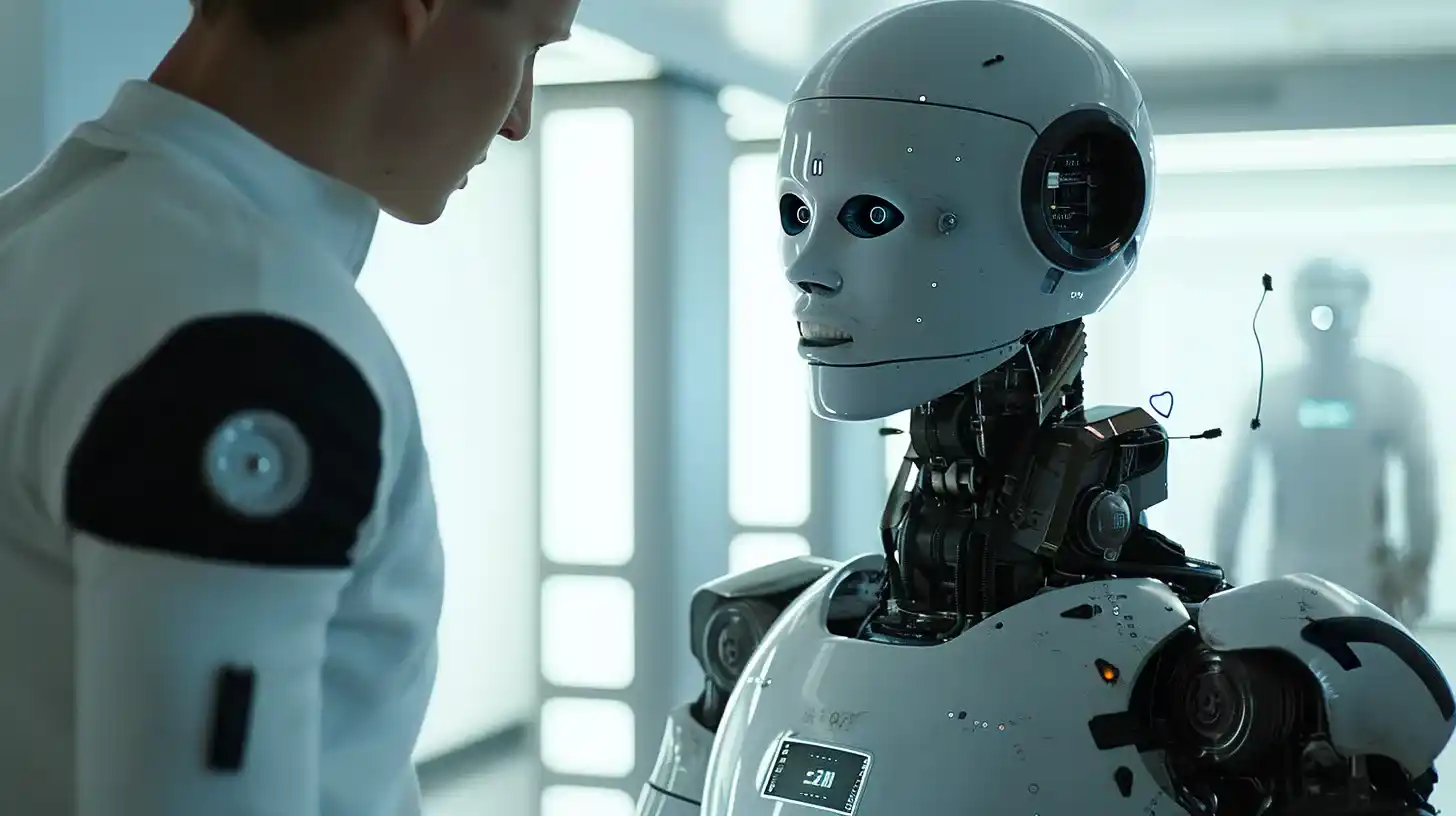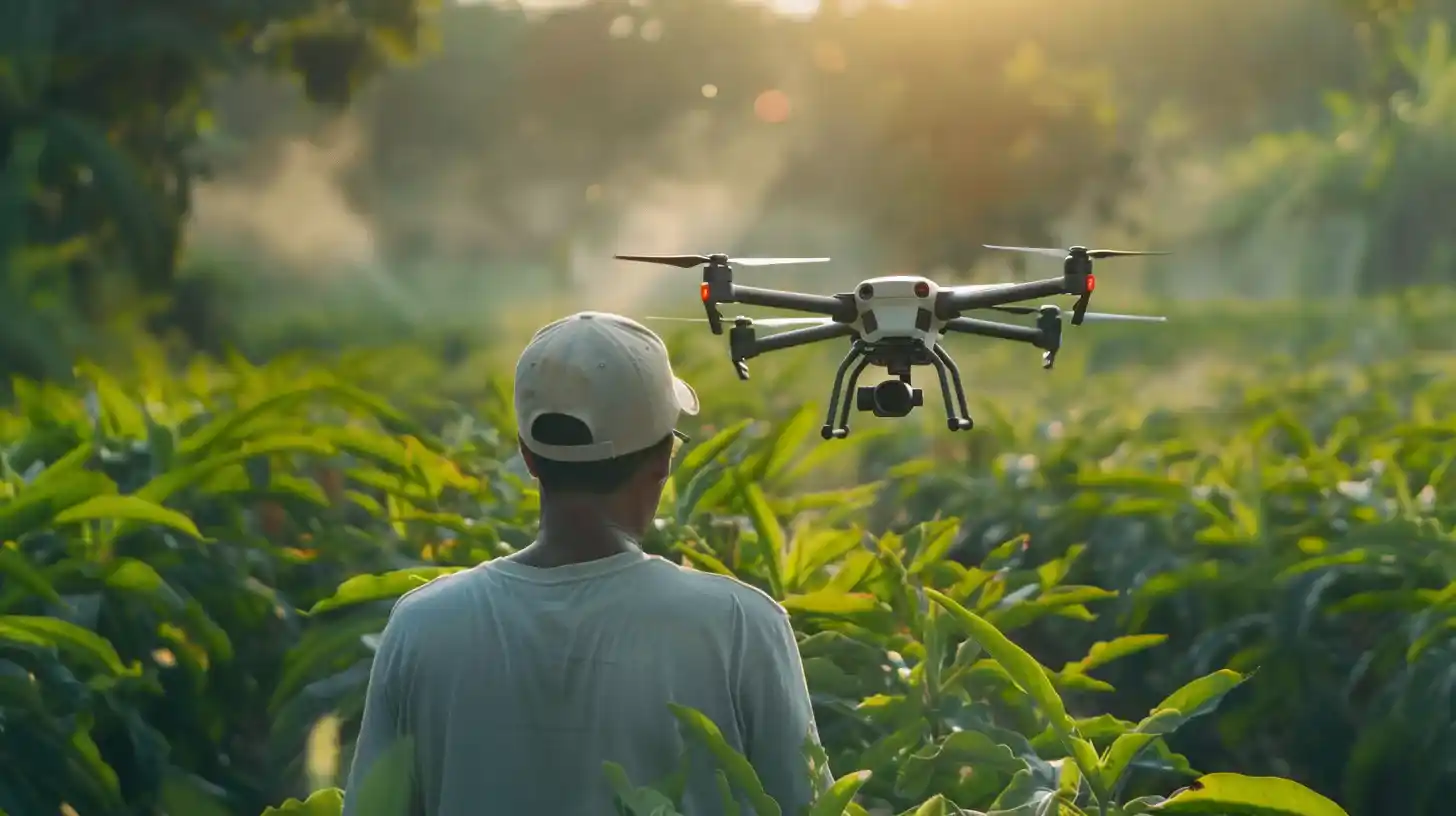Table of Contents
Debunking AI Myths
Artificial intelligence (AI) is rapidly transforming our world, from powering our smartphones to revolutionizing industries. But amidst the hype, there are many misconceptions about AI. Let’s debunk the top 5 AI myths and shed light on its true potential.
Myth #1: AI Will Take Over Our Jobs
The fear of AI taking over all jobs is a common concern. However, the reality is that AI excels at automating repetitive tasks, freeing humans to focus on their strengths: creativity, problem-solving, and social interaction.

Let’s break this down further:
- Automating Repetitive Tasks: Many jobs involve repetitive tasks like data entry, scheduling appointments, or processing invoices. AI can handle these tasks efficiently and accurately, freeing up human workers for more complex activities.
- Focus on Human Skills: As AI automates repetitive tasks, the demand for human skills like creativity, critical thinking, and the ability to manage complex systems will actually increase. Imagine a customer service representative who no longer spends their day entering data but instead focuses on resolving complex customer complaints, requiring empathy and problem-solving skills.
- New Job Creation: A 2020 report by the McKinsey Global Institute estimates that AI will create up to 800 million new jobs globally by 2030. These jobs will likely be in fields that require collaboration between humans and AI, leveraging human creativity and social interaction alongside AI’s analytical capabilities. Think of fields like AI development, data analysis, and human-robot interaction.
Here’s an analogy: Imagine a factory assembly line. In the past, humans performed all the tasks. However, with the advent of robots, some repetitive tasks can be automated. This doesn’t eliminate the need for human workers altogether. Instead, humans can focus on more complex tasks like supervising the robots, overseeing quality control, or designing new products. Similarly, AI will not replace humans entirely, but rather become a partner, freeing us to focus on our unique strengths.
The future of work will likely involve a close collaboration between humans and AI. AI will handle the repetitive tasks, freeing us to focus on our creative and social capabilities. New jobs will emerge that require both human and AI expertise. By embracing this collaboration, we can create a more efficient and productive future of work.
Myth #2: AI is Sentient and Can Feel Emotions
This myth often stems from science fiction portrayals of robots with human-like emotions. While AI can be incredibly sophisticated and even seem to understand and respond to emotions, it’s crucial to understand what’s happening behind the scenes.

The Truth: Complex Algorithms, Not Deep Feelings
AI operates based on complex algorithms trained on massive amounts of data. This data can include text conversations, voice recordings, and even facial expressions. By analyzing these patterns, AI can learn to:
- Recognize emotional cues: AI can identify keywords in text or subtle changes in tone of voice that might indicate emotions like anger, sadness, or joy.
- Respond accordingly: Based on the identified emotions, AI can be programmed to deliver pre-written responses or take specific actions. For instance, a customer service chatbot might identify frustration in a customer’s voice and offer de-escalation tactics like apologies or discounts.
However, it’s important to remember that AI itself doesn’t actually feel these emotions. It’s simply a sophisticated pattern recognition tool mimicking human responses.
Here’s an analogy: Imagine a vending machine. When you insert money and press a button, the machine dispenses the chosen product. But the vending machine doesn’t understand your desire for a snack, nor does it feel any satisfaction when you receive it. It’s simply following a pre-programmed set of instructions based on your input. AI functions similarly, responding to emotional cues based on its training data but not experiencing emotions itself.
The Power of AI Lies in Its Capabilities, Not Sentience
While AI may not be sentient, it’s still a powerful tool with many real-world applications. Here are some examples:
- Improved customer service: AI chatbots can handle routine inquiries and frustrations, freeing up human agents for more complex issues.
- Personalized experiences: AI can analyze user data to recommend products, content, or services tailored to individual preferences.
- Medical diagnosis: AI can analyze medical scans to identify potential problems, assisting doctors in their diagnoses.
As AI technology continues to evolve, it’s likely to play an even greater role in our lives. But by understanding that AI is a powerful tool, not a feeling being, we can harness its potential for positive change.
Myth #3: You Need a Ph.D. to Understand AI

AI is a vast field, but basic concepts are accessible to everyone. There are numerous online resources, courses, and even children’s toys that introduce AI in a fun and engaging way. Platforms like Google AI Experiments allow users to interact with AI models firsthand, giving them a sense of how AI can be used for creative purposes like generating art or composing music. Understanding the core principles of artificial intelligence can empower you to participate in discussions about its impact on society, whether it’s on the ethical considerations of facial recognition technology or the potential of AI for personalized education.
Myth #4: AI is Only for Big Companies
In the past, AI technology was largely limited to big tech companies with the resources to invest in expensive hardware and software infrastructure. However, the rise of cloud-based AI services has changed the game. This is similar to how cloud storage made vast amounts of digital space accessible to everyone, regardless of having a personal server. Cloud-based AI offers several advantages for businesses of all sizes:

- Affordability: Cloud-based AI eliminates the need for expensive upfront investments in hardware and software. Businesses can pay for AI services on a pay-as-you-go basis, making it accessible even for small companies with limited budgets.
- Ease of Use: Cloud-based AI services often come with pre-built AI models and user-friendly interfaces. This means businesses don’t need a team of AI experts to get started. Even non-technical users can leverage AI tools to automate tasks and gain valuable insights from data.
- Scalability: Cloud-based AI services can easily scale up or down based on a company’s needs. This allows businesses to experiment with AI without a significant long-term commitment.
For instance, a small manufacturing company can implement AI-powered quality control systems to identify defects in products or a marketing agency can use AI to personalize customer campaigns and optimize ad spending.
Myth #5: AI is a Threat to Humanity
Science fiction often portrays AI as a superintelligent threat, with robots rising up and taking over the world. While this makes for exciting stories, it’s important to remember that AI is a tool, just like a hammer or a computer. A hammer can be used to build a house or destroy property; AI can be used for good or bad, depending on how it’s developed and used.
The Importance of Responsible AI Development
The key to harnessing the power of AI for positive change lies in responsible development and use. This means focusing on several key principles:
- Transparency: We need to understand how AI systems work. This allows for debugging, identifying potential biases, and ensuring the system is functioning as intended.
- Accountability: There needs to be clear accountability for the development and use of AI. Who is responsible if an AI system makes a mistake? This is important for ensuring safety and preventing misuse.
- Fairness: AI systems can perpetuate existing biases in society. We need to develop AI that is fair and unbiased, ensuring it doesn’t discriminate against any particular group.

International organizations and governments are actively developing guidelines for ethical AI development.
Here are some examples of how responsible AI development is being implemented:
- Bias Detection: Researchers are developing tools to detect and mitigate bias in AI algorithms.
- Explainable AI: This field focuses on creating AI systems that can explain their decision-making process, fostering trust and transparency.
- Human-in-the-Loop Systems: These systems combine AI capabilities with human oversight, ensuring that AI recommendations are reviewed and approved by humans before being acted upon.
So, What Exactly is AI?
AI involves machines imitating human cognitive functions such as learning and problem-solving. There are different types of AI, ranging from narrow AI, which excels at specific tasks like playing chess or recognizing faces, to general AI, which hypothetically could perform any intellectual task a human can. Narrow AI is the most prevalent type today, powering many of the AI applications we interact with daily.
The Future of AI: A Collaborative Partnership
The future of AI lies in collaboration between humans and machines. AI can augment human capabilities, allowing us to achieve more than ever before. Imagine doctors using AI-powered diagnostics to improve patient care, with artificial intelligence analyzing medical scans to identify potential issues and suggesting treatment options. Scientists can leverage AI to accelerate research and development in fields like medicine and materials science, using AI to analyze vast datasets and identify patterns that might lead to breakthroughs.
As AI continues to evolve, it’s important to have open discussions about its ethical implications and ensure its development benefits all of humanity. Regulatory bodies, researchers, and developers need to work together to create a future where AI is used responsibly and ethically, focusing on areas like transparency, accountability, and fairness in the development and use of artificial intelligence.
Conclusion
By debunking these myths and understanding the reality of artificial intelligence, we can move forward with a clear understanding of its potential. AI is not a replacement for human intelligence but a powerful tool that can be harnessed to solve complex problems, improve our lives, and create a brighter future. Let’s embrace AI as a partner in progress, working together to build a future that benefits all, where humans and artificial intelligence collaborate to create a better world.